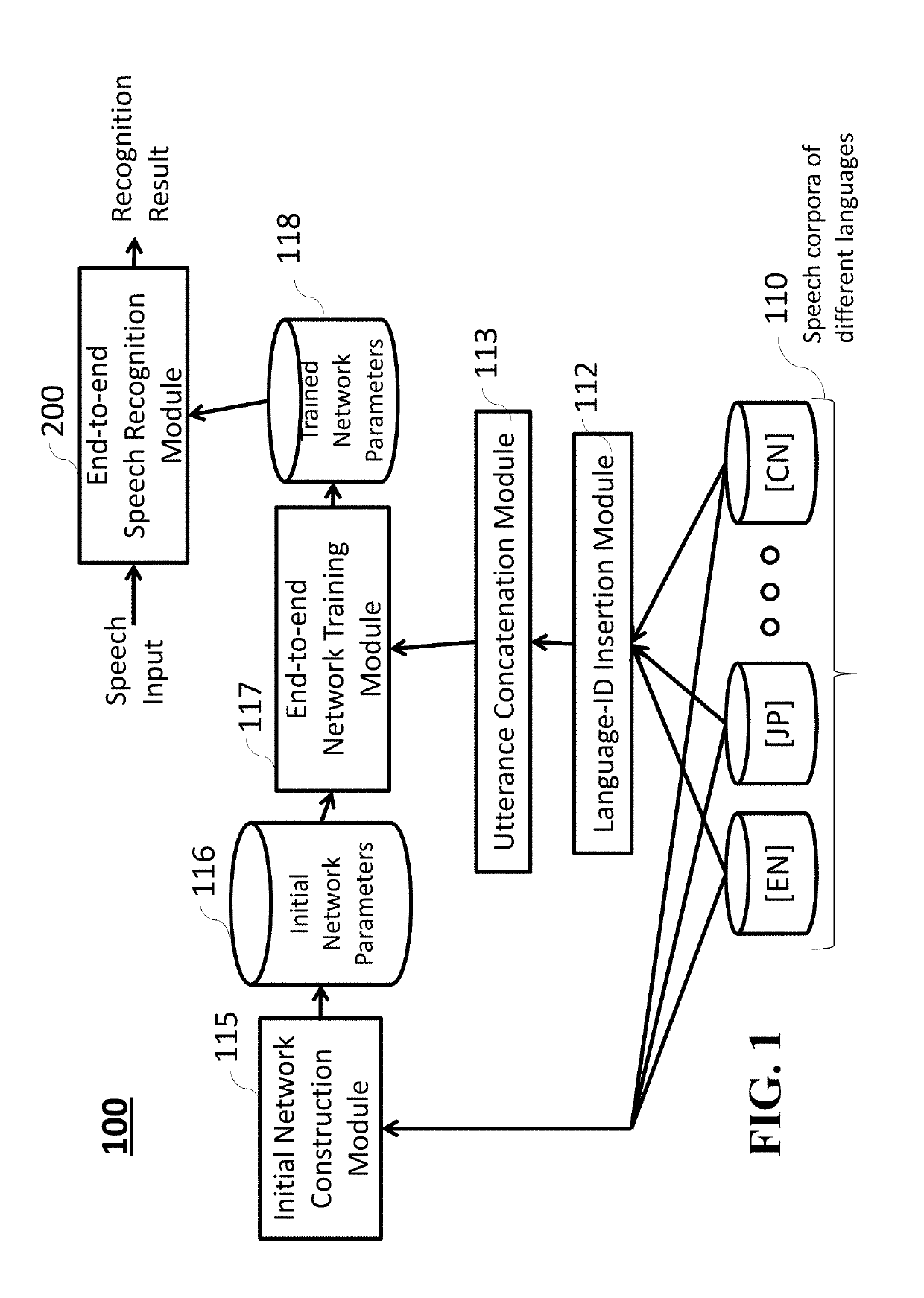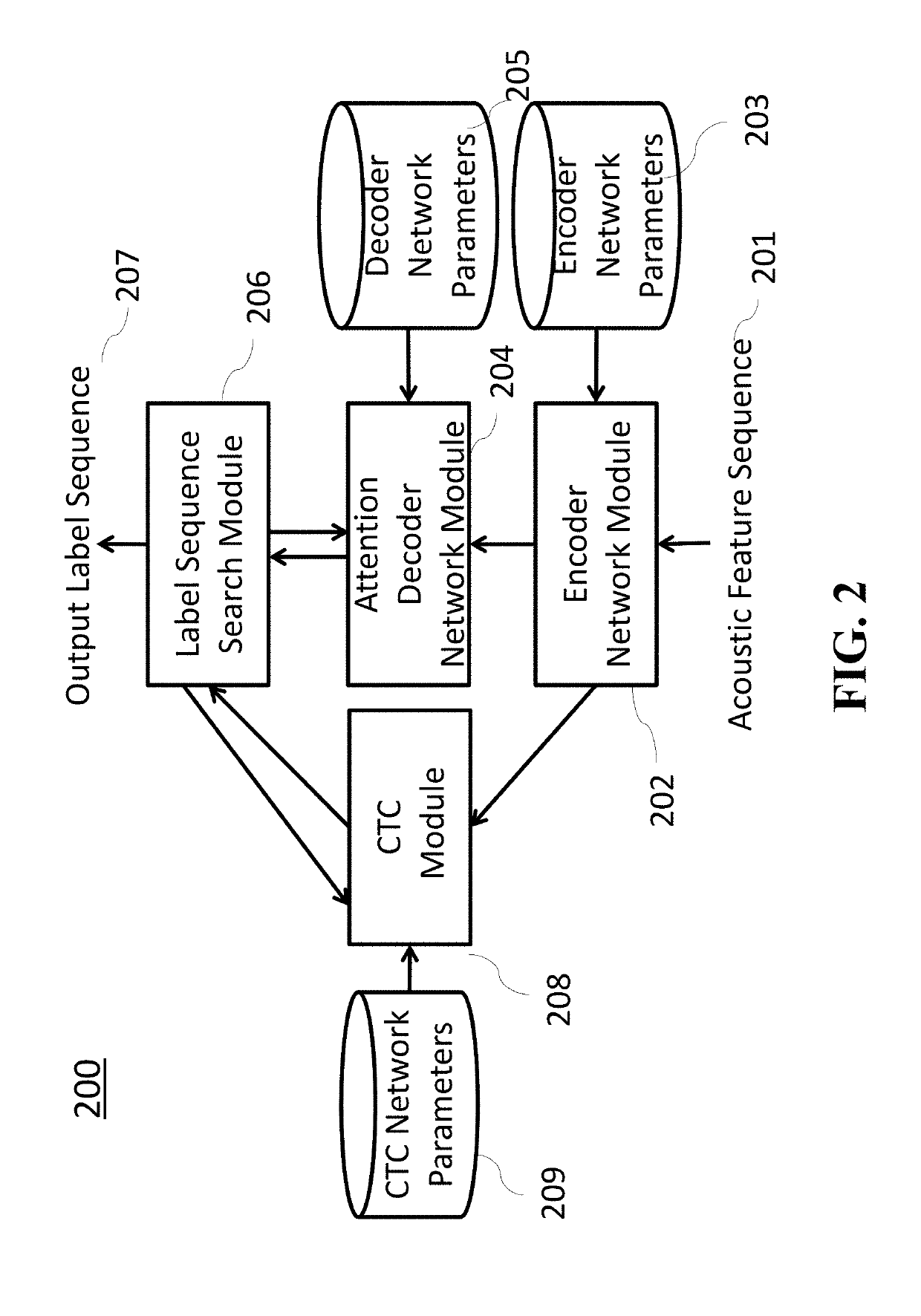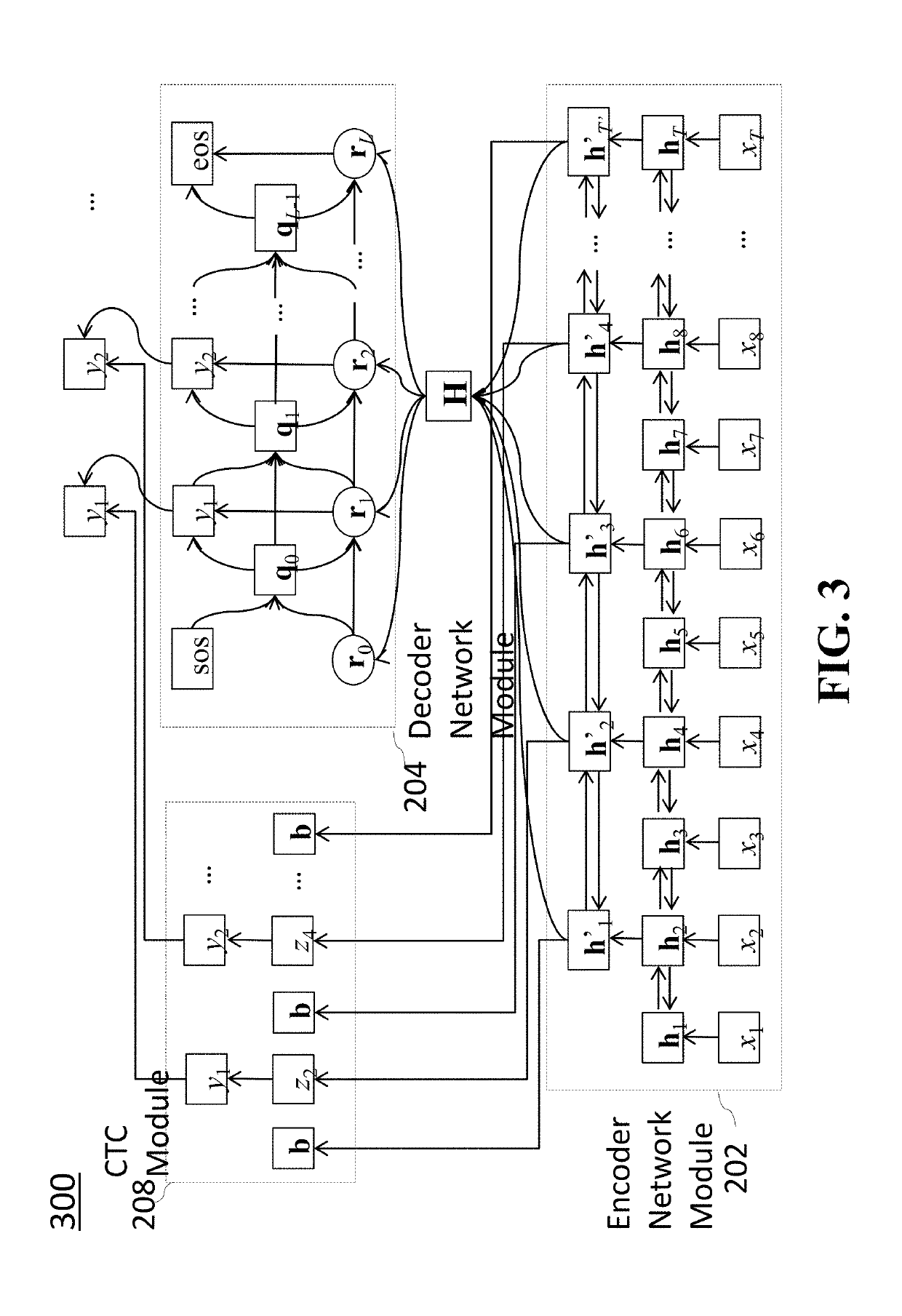Method and Apparatus for Multi-Lingual End-to-End Speech Recognition
a multi-lingual, end-to-end technology, applied in speech analysis, speech recognition, instruments, etc., can solve the problems of increasing the effort required to develop asr systems, especially for new languages, and the use of language-dependent resources, so as to improve the feature representation
- Summary
- Abstract
- Description
- Claims
- Application Information
AI Technical Summary
Benefits of technology
Problems solved by technology
Method used
Image
Examples
Embodiment Construction
[0023]In the preferred embodiments of the present invention, a language-independent neural network is constructed using multiple speech corpora of different languages.
[0024]The neural network can be used to recognize a spoken utterance and identify the language of the utterance jointly. For example, this neural network can be used to automatically transcribe utterances in English, Japanese, Mandarin, German, Spanish, French, Italian, Dutch, Portuguese, and Russian, and jointly identify the language of each utterance. If a person speaks “How are you?” in English to a system built according to the embodiments of the present invention, the system may output “[EN] how are you?” in a text format. If another person speaks “comment allez-vous ?” in French to the same system, it may output “[FR] comment allez-vous?” in a text format. [EN] and [FR] represent language ID labels corresponding to English and French, respectively. If a person speaks “How are you? comment allez-vous?” in English ...
PUM
 Login to View More
Login to View More Abstract
Description
Claims
Application Information
 Login to View More
Login to View More - R&D
- Intellectual Property
- Life Sciences
- Materials
- Tech Scout
- Unparalleled Data Quality
- Higher Quality Content
- 60% Fewer Hallucinations
Browse by: Latest US Patents, China's latest patents, Technical Efficacy Thesaurus, Application Domain, Technology Topic, Popular Technical Reports.
© 2025 PatSnap. All rights reserved.Legal|Privacy policy|Modern Slavery Act Transparency Statement|Sitemap|About US| Contact US: help@patsnap.com



